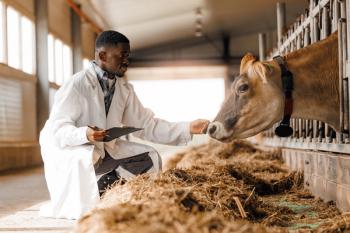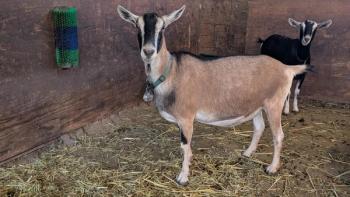
Epidemiology of Patellar Luxation in Dogs in England
The overall prevalence of patellar luxation in dogs in England is 1.3%, according to a report recently published in Canine Genetics and Epidemiology.
The overall prevalence of patellar luxation in dogs in England is 1.3%, according to a report recently published in
The study’s dataset included records of 210,824 dogs from 119 primary-care practices in England that participate in the
Pomeranians were more than 6 times as likely as crossbreds to have patellar luxation; Yorkshire terriers, Chihuahuas, and French bulldogs were more than 5 times as likely. Other breeds at least twice as likely as crossbreds to have patellar luxation were pugs, bichons, Lhasa apsos, bulldogs, Cavalier King Charles spaniels, and West Highland white terriers.
The breed predispositions identified in this study were mostly similar to those found in previous studies. The authors attribute discrepancies to differences in methodology and population (other studies used data collected from referral centers, not primary-care practices). The results do not support previous reports of high incidences of patellar luxation in large dogs such as the Labrador retriever. The authors suggest that referral bias might have contributed to those results.
Most cases of patellar luxation (62.2%) were unilateral. Thirty-nine percent of the dogs with patellar luxation received medical treatment, 13.2% had surgical treatment, and 3.7% were referred to a specialist. In the relatively small number of dogs receiving surgical treatment, the median time from diagnosis to operation was 15 days. “This suggests that when surgery was chosen, it was generally a clear-cut decision,” write the authors.
Neutered dogs were 2.4 times as likely as intact dogs and female dogs were 1.3 times as likely as male dogs to be diagnosed with patellar luxation. Although the reasons for these findings are unclear, the authors speculate that hormonal effects could influence musculoskeletal development.
Dogs with body weights lower than average for their breed were 1.4 times as likely to have patellar luxation as dogs at or above their breed’s average weight. The authors suggest that this finding could reflect lower muscle mass in dogs with patellar luxation.
The median age at first diagnosis was 4 years. Dogs over 12 years of age had significantly lower odds of receiving a new diagnosis of patellar luxation than those younger than 3 years. “From a welfare perspective, diseases which are present from a young age and do not substantially shorten lifespan can represent a significant welfare burden for affected animals due to their chronicity,” write the authors.
The authors named several study limitations. The participating private clinics might not represent all veterinary clinics in England, and the accuracy of the dataset depended on the diagnostic and record-keeping practices of individual clinics. The authors also noted that veterinarians might be more likely to check for patellar luxation in small dogs than in large ones, possibly biasing the breed results.
The study was funded by the Kennel Club Charitable Trust, which had no direct role in study design; data collection, analysis, and interpretation; or manuscript development.
Dr. Laurie Anne Walden received her doctorate in veterinary medicine from North Carolina State University. After an internship in small animal medicine and surgery at Auburn University, she returned to North Carolina, where she has been in small animal primary care practice for over 20 years. Dr. Walden is also a board-certified editor in the life sciences and owner of Walden Medical Writing, LLC.
Newsletter
From exam room tips to practice management insights, get trusted veterinary news delivered straight to your inbox—subscribe to dvm360.






